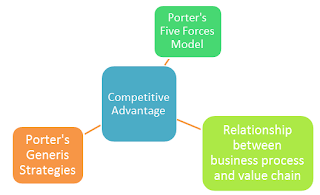Chapter 4 (Measuring the Success of Stratergic Initiatives)

Chapter 4 – Measuring the Success of Strategic Initiatives MEASURING INFORMATION TECHNOLOGY’S SUCCESS - Key performance indicator – measures that are tied to business drivers - Metrics are detailed measures that feed KPIs - Performance metrics fall into the nebulous area of business intelligence that is neither technology, nor business centered, but requires input from both IT and business professionals EFFICIENCY AND EFFECTIVENESS - Efficiency IT metric – measures the performance of the IT system itself including throughput, speed, and availability - Effectiveness IT metric – measures the impact IT has on business processes and activities including customer satisfaction, conversion rates, and sell-through increases BENCHMARKING – BASELINE METRICS - Regardless of what is measured, how it is measured, and whether it is for the sake of efficiency or effectiveness, there must be bench
